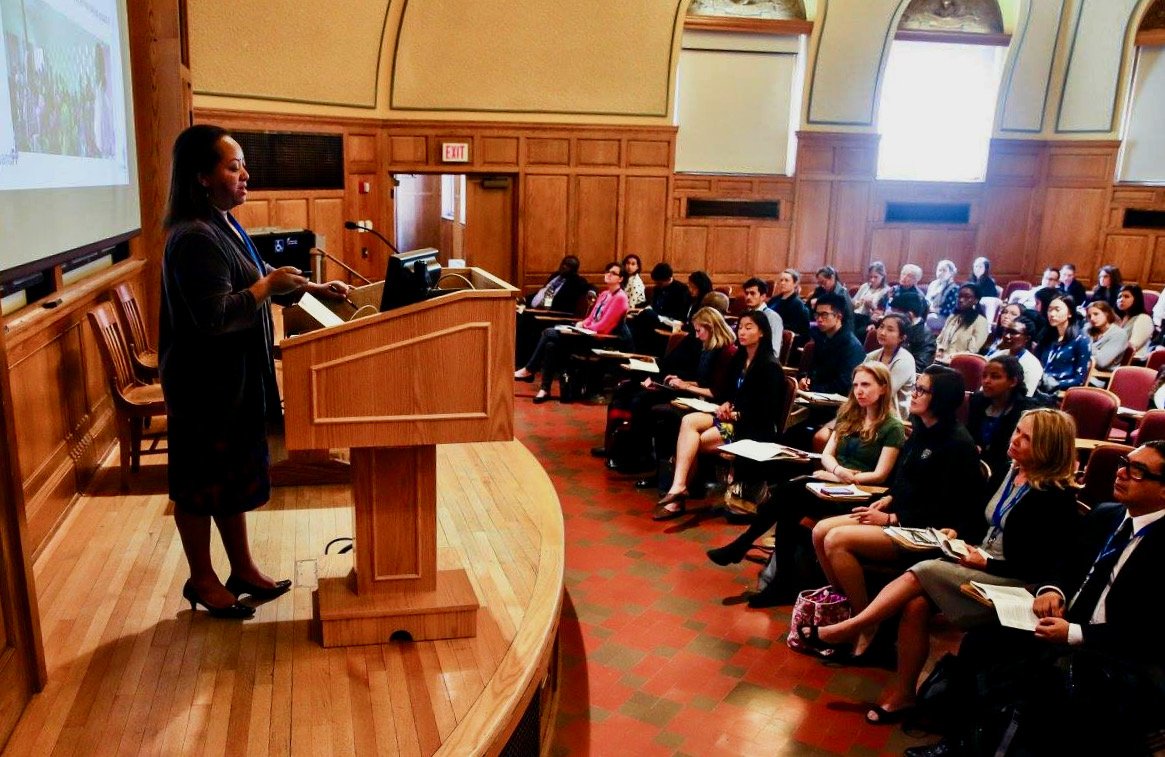
HEALTH EDUCATION STRATEGIES CERTIFICATE
Module 4: Peer Education
Peer education is an effective means of disseminating health information throughout the community. Individuals act as messengers, spreading acquired information and practices to children, friends, and other community members. Peer-to-peer interventions select individuals who share demographic characteristics, and the programs train them to increase awareness, impart knowledge, and encourage behavior change among members of that same group. Peer education can be delivered formally in structured settings, such as in the classroom, or in informal settings, such as through daily interactions. Peer education programs are based on the idea that peers have a strong influence on one another's behavior. Also, peer educators are thought to have access to vulnerable and hard-to-reach populations, and to have already established rapport with peers. Several peer education programs have been developed to address issues relating to HIV. Medley et al. conducted a systematic review of peer education interventions in developing countries over a period of 16 years. Their findings show that peer education interventions were significantly associated with increased HIV knowledge, reduced equipment sharing among injection drug users, and increased condom use. The findings from Medley et al. provide evidence that peer education programs are effective at improving knowledge and behavioral outcomes.(1)
Case Study: mothers2mothers
Mothers2mothers (m2m) is an organization that facilitates peer-to-peer education by offering an effective, sustainable peer education model that provides education and support for pregnant women and new mothers living with HIV/AIDS. A key obstacle in preventing mother-to-child transmission in Africa has been a lack of outreach, education, and support for HIV-positive pregnant women and new mothers. Thus, m2m provides educational and psychosocial mentoring and support by training and employing HIV-positive mothers who have also completed the program. These women serve as mentors, providing peer education and psychological support to HIV-positive women who are pregnant or new mothers. This mentorship program empowers mothers to access life-saving treatment for their children and for themselves. Mothers2mothers services include:
Regular support groups
Formal and informal individual counseling
Help with issues of stigma and disclosure to family and friends
Comprehensive education sessions about HIV/AIDS
Daily gatherings for nutritious lunches and nutrition education(2)
Case Study: Children For Health
Children For Health is an organization that teaches children in limited resource countries to be effective communicators of important health messages to their families, friends, and communities. Crucial health messages relating to hygiene, nutrition, and disease prevention methods for diseases like malaria and HIV/AIDS are taught through a variety of child-friendly methods including story books, radio broadcasts, and games. Children For Health believes that children are capable of being agents of change and positively impacting their local communities because they often have more direct contact with their siblings and friends than adults. It is not uncommon for older children, rather than adults, to supervise younger siblings and other young people. Additionally, providing key pieces of knowledge about health to children in an interactive, engaging way has a positive impact on disease prevention and treatment in their communities. These two insights have led Children For Health to develop and promote one hundred important messages about ten key topics in health care for children to learn and spread in their communities.(3) Children For Health prepares children to take charge of their own health and become leaders to promote preventative health care techniques, knowledge about prevalent diseases, and proper hygiene practices to improve the health of their communities. Children For Health’s resources include:
Stories for Health, a collection of children’s books used in school and at home
Posters for Health, promoting discussions surrounding health without needing to be literate
A variety of interactive games used to both educate and allow children to be enthusiastic about learning vital health care messages
Partnering with the Hanging Libraries Initiative to create and disseminate inexpensive, accessible books in poor, remote areas of the world
Forming children’s clubs to allow youth to participate in engaging activities about health issues (4)
Intervention in Context
Peer education should be considered as an "intervention-in-context," because it is most effective where there are social conditions that enable a program to be successful. A comparison of two HIV prevention programs run by sex workers in India and South Africa, for example, helped to identify key factors associated with each project’s successes and failures. For example, the project in India was successful because it was undertaken in a stable and supportive social, material, and political context, and the workers were provided with sufficient resources to be successful. From these results, researchers concluded that there is a need for greater community participation in HIV prevention efforts, such as peer education. Successful interventions typically address the social factors that can disempower the community, involve community members actively in project design, and devise strategies for empowerment.(5)
Footnotes
(1) Population Council. (2000) Peer Education and HIV/AIDS: Past Experience, Future Directions. http://librarypdf.catie.ca/PDF/P18/20862.pdf.
(2) "Mothers2mothers." http://www.m2m.org/.
(3) "Children for Health." www.childrenforhealth.org.
(4) Ibid.
(5) Cornish, F., & Campbell, C. (2009). The social conditions for successful peer education: A comparison of two HIV prevention programs run by sex workers in India and South Africa. American Journal of Psychology. 44: 123 – 35.
